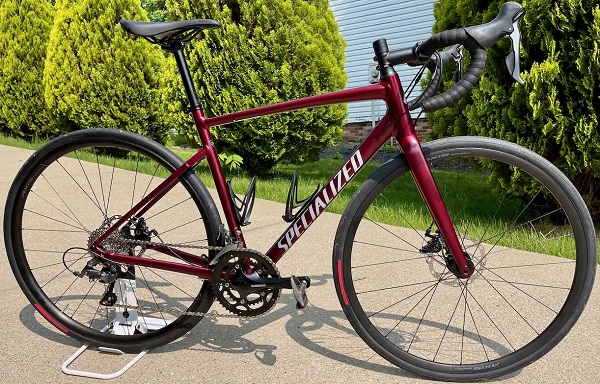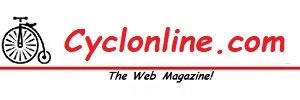
Specialized ALLEZ guide to buying a used racing bike what to check for known and lesser-known defects prices which are the best vintages and which models to focus on
Used Specialized ALLEZ Buying Guide
Used Specialized Allez: Complete Road Bike Buying Guide
The Specialized Allez has been a benchmark in the world of aluminum road bikes for decades, appreciated for its versatility, durability and excellent value for money. Buying a used Allez can be a great way to get a high-performance bike without overspending. However, as with any second-hand purchase, it is essential to know what to look for to ensure you get a bargain and not a rip-off. This comprehensive guide will help you navigate the used market, focusing on the crucial aspects of the Allez.
Why Choose a Used Specialized Allez?
The Specialized Allez is renowned for several qualities that make it a great choice even in the used market:
Versatility: Perfect for training, group rides, commuting and even first races.
Durability: Aluminum frames are impact resistant and less susceptible to structural damage than carbon in the event of a fall or minor impact.
Simple Maintenance: Being a bike without any particular technological complications (in most years), maintenance is generally simpler and cheaper.
Balanced Ride: It offers a good compromise between comfort and responsiveness, making it suitable for a wide range of cyclists.
What to Check When Buying: Step-by-Step Guide
The inspection of a used bike must be thorough and systematic.
1. Documentation and Provenance
Original Receipt/Purchase Invoice: Essential to certify legitimate ownership and, in some cases, for any residual guarantees on the frame.
Frame Number: Verify that the frame number has not been scratched off, altered or removed. Write it down and, if possible, ask the seller to provide it in advance for possible cross-checks (although manufacturers or law enforcement rarely provide information on the provenance to private individuals without a theft report).
2. Frame and Fork
Cracks and Dents: Inspect every corner of the frame, paying particular attention to the welds (head tube, bottom bracket, seat stays, seat post, and dropouts). Cracks in aluminum almost always indicate irreparable structural damage. Dents can compromise integrity.
Deep Scratches: Small surface scratches are normal. Deep scratches that penetrate the metal can be the result of significant falls.
Fork: The fork, especially if carbon, is a critical point. Check for cracks, delamination, or signs of impact, especially around the steerer tube and seat stays. A frontal impact can cause invisible damage to the fork and head tube.
Alignment: Look at the bike from several angles to make sure the frame and fork are aligned. A crooked bike can be dangerous and inefficient.
3. Drivetrain Components
Chain: Measure the elongation with a chain gauge (it costs a few bucks). A stretched chain (over 0.75% for 11/12 speeds, over 1% for 9/10 speeds) indicates that the sprockets and chainrings have worn out.
Cassette: Check the teeth. If they are "shark fin" (pointed and curved), the cassette is worn and will need to be replaced along with the chain.
Chainrings: Check the wear of the chainring teeth. Very sharp or "bent" teeth indicate wear.
Derailleurs (Front and Rear): Check that they are straight, without excessive play and that the movement is smooth. Test the shifts on all gears to ensure that they are precise and without hesitation.
Shifters: Check the operation of the levers and buttons. Make sure that the cables slide freely without friction.
4. Wheels
Rims: Check for dents (especially on the edges), cracks or bends. Spin the wheels to ensure that they are straight (true).
Spokes: Check that all spokes are tight and none are broken or loose.
Hubs: Check that there is no play in the hubs (by taking the wheel and moving it sideways).
Tires: Assess the condition of the tread and the absence of cuts or cracks.
5. Brakes
Brake Discs (if disc): Check that they are not bent, damaged or excessively worn.
Pads/Pads: Check the thickness of the pads (if caliper) or pads (if disc).
Brake Levers: Check that there is no abnormal play, that the braking is powerful and modulable and that there are no fluid leaks (if hydraulic brakes).
6. Various Components
Steering: Check that there is no play (brake the front wheel and move the bike back and forth, feeling if the head tube moves).
Bottom Bracket: Make sure there is no play or noise (squeaks, creaks) while pedaling.
Saddle and Seat Post: Check that the seat post is not stuck in the frame and that there are no cracks or saddle deformation.
Pedals: If included, check condition and smoothness.
Known (and Lesser Known) Specialized Allez Flaws
The Allez, being a long-lived and very popular model, has a reputation for robustness. The "known" flaws are often related to wear and tear or particular vintages/components.
Known Flaws (General):
Drivetrain Wear: Common on any used bike, but Allezes, being often used for intensive training, can have a very worn drivetrain.
Bearing Wear: Bottom bracket, wheel hubs, and headset are subject to wear. Check for play and smoothness.
Loose Spokes: Prolonged use can lead to loose or broken spokes, especially on lower-end stock wheels.
Lesser-Known Faults / Things to Consider:
Hidden Cracks (Cosmetic): Sometimes, a crash can cause a small crack in the frame that is not immediately visible under the paint. A very detailed inspection, perhaps in good light and by touching the surface, can reveal irregularities.
Fork Problems (especially Carbon): Even if externally intact, a fork that has suffered a strong frontal impact may have internal micro-fractures, compromising safety. Test the frame/fork by tapping it lightly with a coin: a dull sound in a place that should be resonant may indicate damage.
Front Derailleur Attachment (for some models): In some years, the front derailleur (if clamp or braze-on) may be subject to small movements or wear of the pivot, causing imprecise shifting.
Prices, Best Years and Models to Look For
Prices for a used Specialized Allez can vary greatly based on several factors:
Specific Year and Model: Newer Allezes (Allez Sport, Elite, Comp, or the new Allez Sprint) will command higher prices.
General Condition and Component Wear: A well-maintained bike with components that are not worn out will command a higher value.
Build (Groupset, Wheels): An Allez with a Shimano 105 or Ultegra groupset and quality wheels will command a higher value than one with a Sora or Claris and basic wheels.
Disc Brakes: Disc brake versions tend to command a higher value.
Market and Supply/Demand: Pricing can vary depending on the region and specific demand for that model.
Which Years and Models Are Best to Look For?
The Allez has evolved a lot over the years.
Allez Base/Sport (Older Vintages): Models from 2010 to 2015-2016 can be a great budget option for a starter or training bike. They often feature Shimano Claris or Sora groupsets. Prices are moderate, typically between $300 and $600, depending on condition.
Allez Elite / Comp (Mid-Years): The 2015-2019 Allez Elite or Comp offer a lighter, more refined aluminum frame (often with D'Aluisio Smartweld technology) and feature Shimano 105 groupsets. They are an excellent compromise between performance and price. Prices range from $500 to $900, depending on build and condition.
Allez Sprint: This is a more aggressive, performance-oriented version, often with visible Smartweld welds and a more racing geometry. Some versions have a carbon rear triangle or feature higher-end groupsets. If you're looking for a high-performance, responsive bike, even for racing, the Allez Sprint is the ideal choice. Used prices range from €800 to €1,500, depending on the year, the build (often 105 or Ultegra), and whether it has disc brakes.
Allez Base (2023 model year onwards) / Allez Sport (2023 model year onwards): These are the newest versions, featuring a revised aluminum frame, often with a full carbon fork, and sometimes disc brakes. They're closest to the performance of an entry-level carbon bike. Used bikes from these years will be more expensive, but offer modern technology and prices between €800 and €1,200 for the Sport/Base versions, and potentially more for better builds.
General Advice: Aim for a model with a Shimano 105 groupset (or equivalent SRAM/Campagnolo) as it offers the best balance of performance, durability and maintenance costs. If your budget allows, disc brake versions offer superior control, especially in the wet.
Conclusion
Buying a used Specialized Allez can be an excellent deal, providing you with a reliable and high-performance road bike. The key is a diligent pre-purchase inspection and a clear understanding of the market value based on the vintage and specification. Take your time, ask the seller questions and, if possible, ask to take a short test ride to listen for any noises or anomalies. With these precautions, you will be able to enjoy your new (used) Allez on the road for many miles.
